Since the previous Blog post about Auschwitz was topically about as dark as it can get, I decided to offset that with a post about something at the lighter end of the dark-tourism spectrum: urbexing (from ‘urban exploration’, visiting abandoned structures for fun if you, like me, enjoy the aesthetics of dilapidation and decay – in fact on my website I say that urbex only overlaps with dark tourism, but as it’s one of the least touristy categories it’s one I often enjoy a lot).
Wanli is a largely abandoned beach resort park on the north coast of Taiwan. Officially it is a district of New Taipei City, but is actually far from being ‘urban’ in the literal sense; instead it’s pretty desolate. My driver-guide referred to it as a “very strange place” … We were there on the last day of my nearly three-weeks-long Taiwan trip last December/early January, as the first stop of a whole day of exploring the region north-east of Taipei.
The short bit about Wanli towards the end of my general overview Taiwan Blog post from 7 January already had a couple of photos from this place. They were taken with a smartphone (and were hence instantly available); but now that I’ve finished processing the RAW files I can give you images taken with my full-frame dSLR camera. So the remainder of this post will primarily be a photo essay again.
I picked Wanli because the relevant section in that general Taiwan post attracted some responses regarding the so-called Futuro Houses. Here’s a first photo:
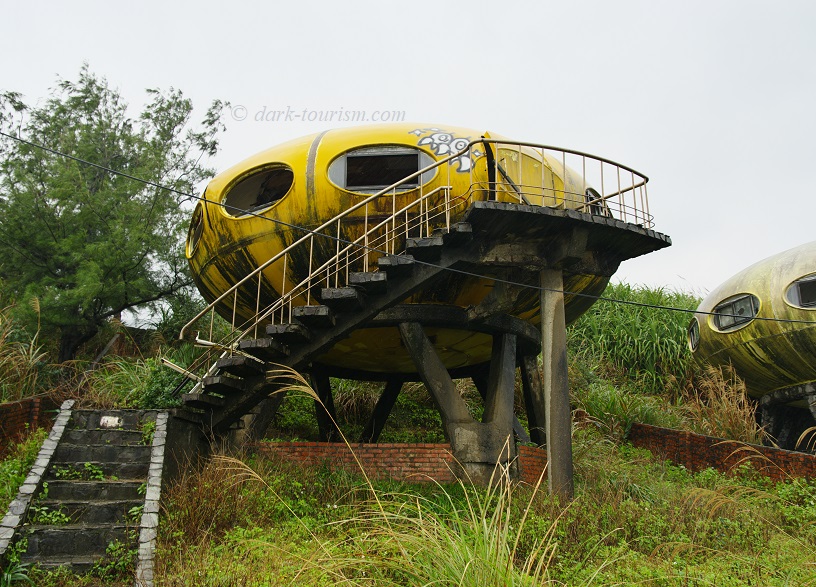
“Futuro” Houses, informally aka “UFO Houses”, as well as the related, somewhat less extraordinary “Venturo” Houses, were Finnish designs from the late 1960s/early 1970s and are today often referred to as “retro-futuristic”. Back then they proved an economic failure, but in recent years interest in these bizarre structures has resurfaced.
I had first stumbled upon the Wanli Futuro Village on Atlas Obscura (external link, opens in a new tab). As usual on AO, the entry is rather short and superficial (although their general Futuro article is more elaborate and features a map), and they get the total number of Futuros at Wanli wrong – they say six, but I counted seven … but never mind (apparently there were once at least 12, plus several dozen Venturo Houses, but some have meanwhile been removed).
Then I also found a Blog post about Wanli that is much more substantial with some background info (another external link opening in a new tab) and that also has a practicalities section. Remarkably its author’s 17 photos show hardly any overlap with my own photos – which I see as evidence that we both could have explored this site in much more depth!
And then I found that there is a whole encyclopedic website entirely dedicated to Futuro Houses (yet another external link, opens in a new tab too). That is a resource so comprehensive that I couldn’t possibly compete. So for more background information I refer you to that site; and for the rest of this post I’ll concentrate only on the visual impressions I gathered.
First off, here’s a photo of the interior of one of the Futuro Houses (same image as the featured one at the top of this post):
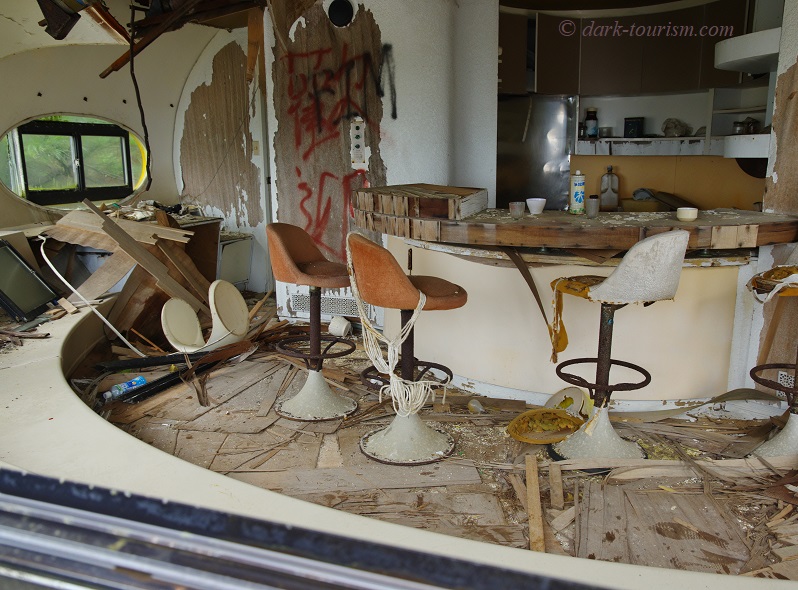
This is the interior of the same Futuro House whose exterior featured in the first photo above. As you can see in that one, the door was ajar, so I couldn’t resist the temptation of climbing the stairs and sneaking in (the flimsy barrier at the bottom of the steps proved no real obstacle). I found the semi-dilapidated state of this part quite amazing .. and before you ask: yes, I did have a test sit-down on one of the bar stools 😉
Behind the bar, at the core of the circular structure, is the kitchen – and still in situ there were some dishes, jars of unknown contents and what I believe to be a box of teabags, amongst other things:
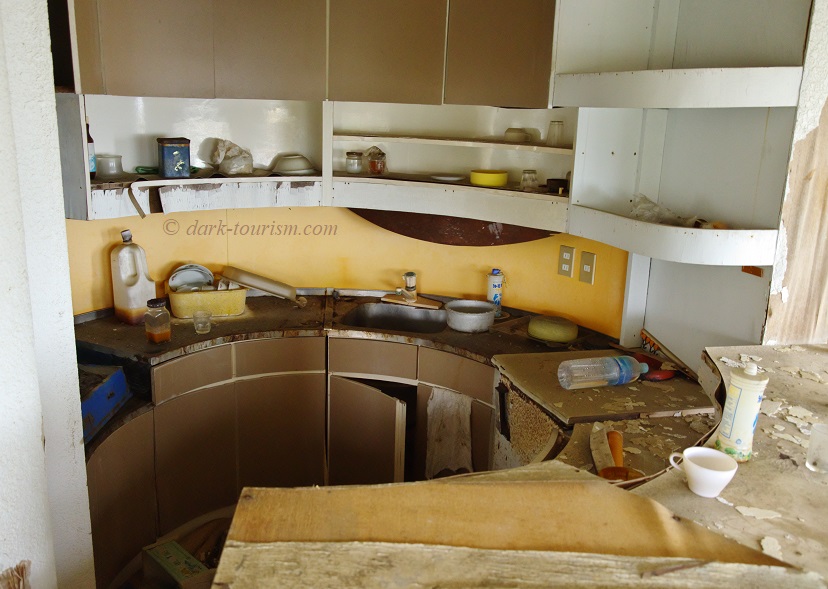
The bedroom next door has fared less well, there is still a bed complete with a mattress, but the rest of the furnishings looked very battered indeed:
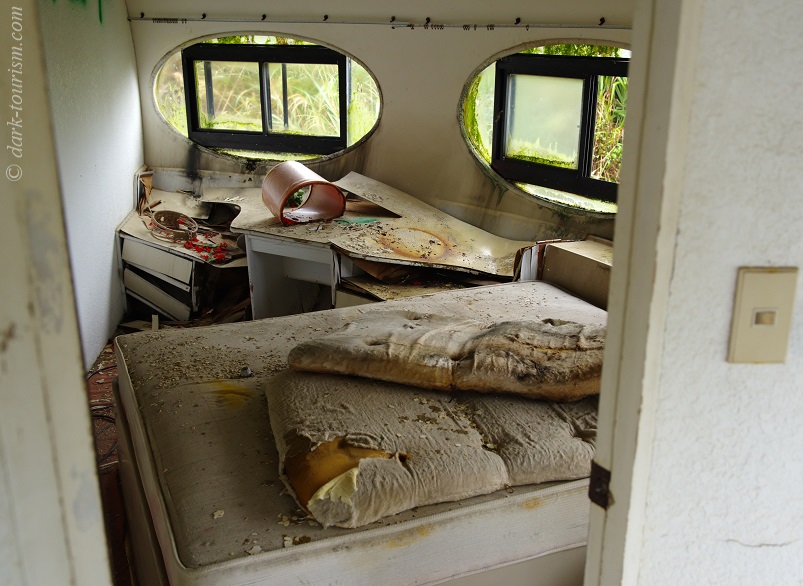
The adjacent bathroom, on the other hand, was comparatively intact, though there wouldn’t have been any running water these days (and no, I did not try the toilet!):
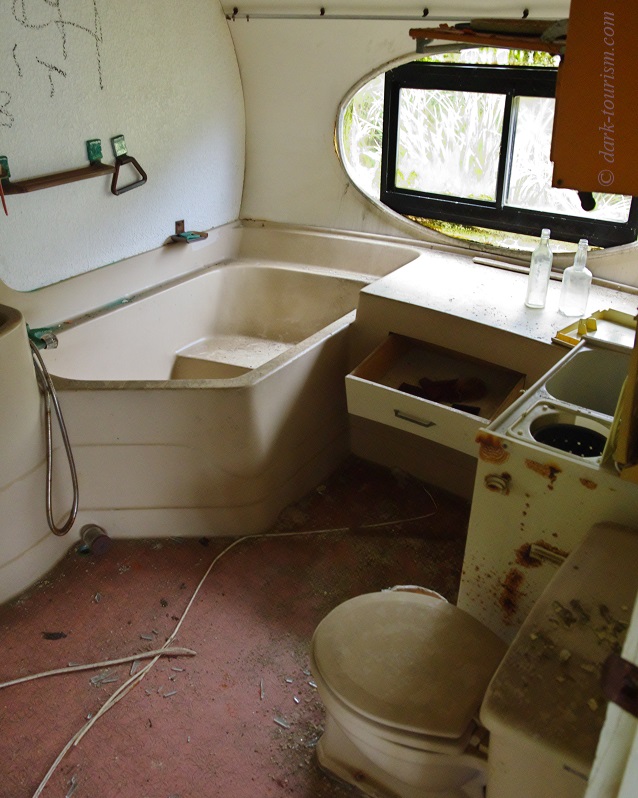
The rather compact space even still featured a (now defunct) washing machine and what I presume was a tumble dryer:
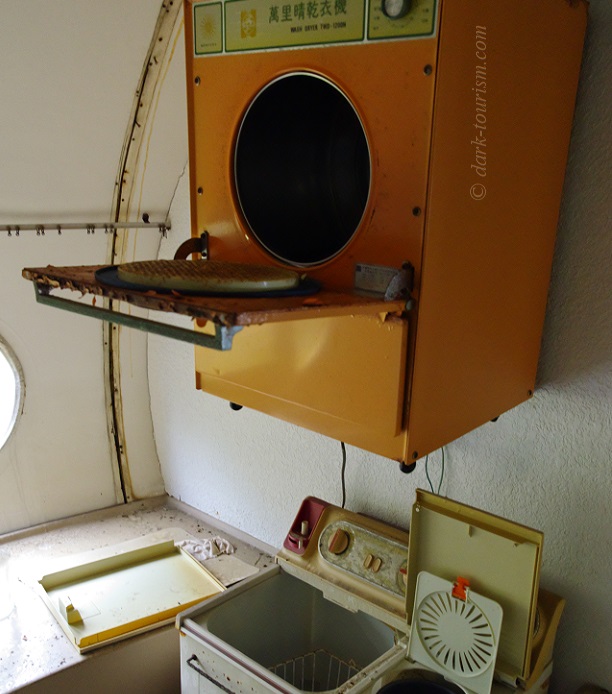
The Futuros at Wanli came in pairs or were stand-alone structures. Here’s a photo of the one neighbouring the one I entered:
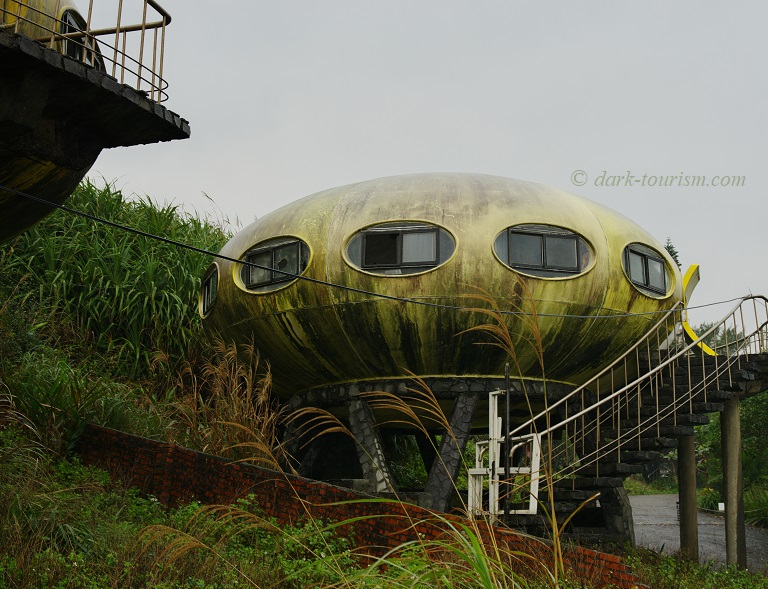
The door to this one stood wide open, but as you can see the barrier at the bottom of the access stairs is a bit more substantial. I’m sure it would have been possible to scale this as well, but I didn’t attempt it, partly because we were a bit pressed for time given that day’s rather densely packed itinerary.
Looking out from the top of the access stairs to the Futuro I had entered, you could make out another pair of Futuros in the background, with a Venturo House in the foreground:
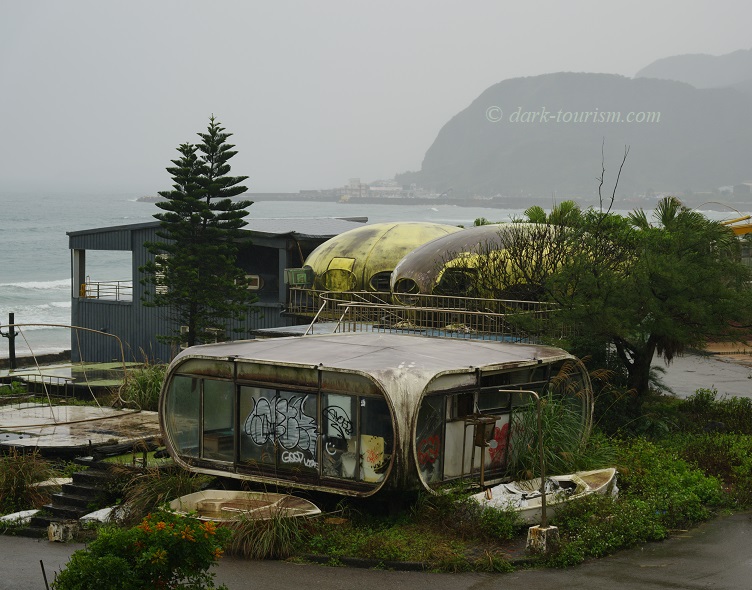
I’ve meanwhile learned that the shed-like structure to the left of the two yellow Futuros contains yet another “hidden” Futuro that is grey … but I didn’t know that then and so didn’t go to have a look.
Nor did I explore the two Futuros in the next photo (which also features a couple of Venturos):
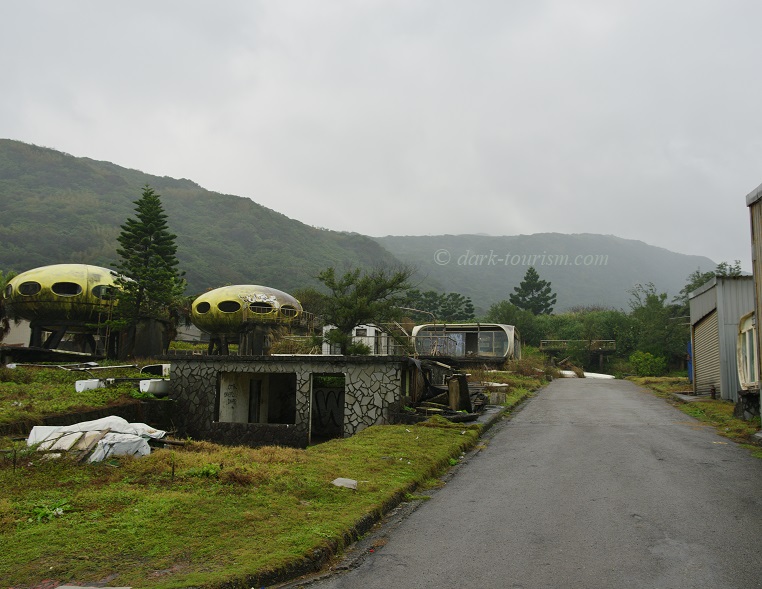
I did climb the (unobstructed) stairs to another one of the Futuros – and through the glassless windows could see that its interior was totally trashed; so I didn’t see any point in trying to go in.
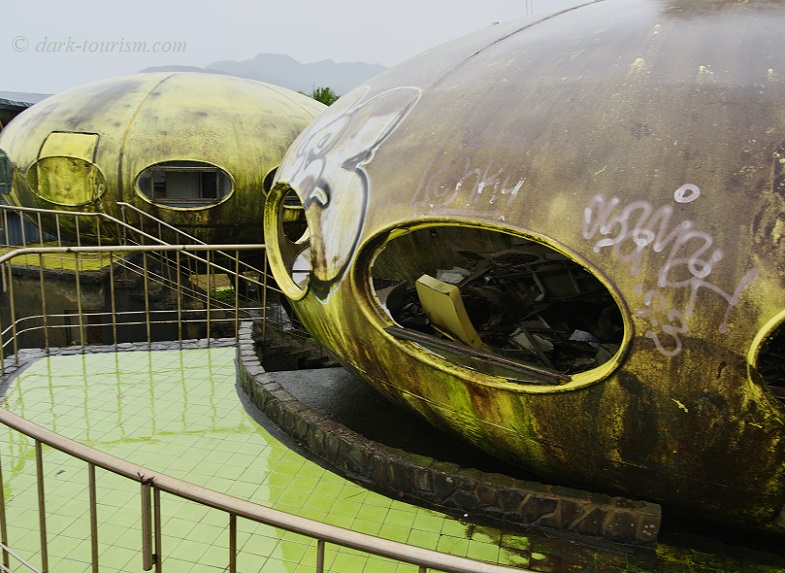
The same was true for most of the Venturo Houses; some were even semi-collapsed, like the one on the left in this next photo:
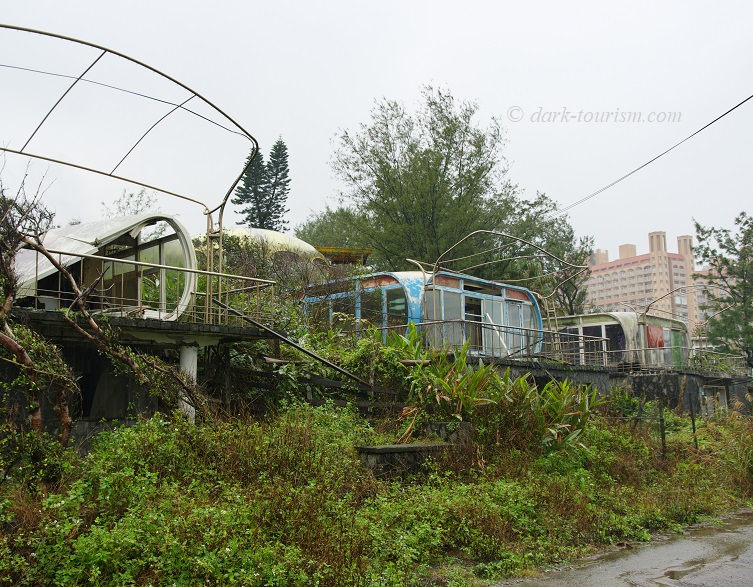
Quite a few Venturos have disappeared altogether – as evidenced by these empty platforms next to the Futuro I climbed up to:
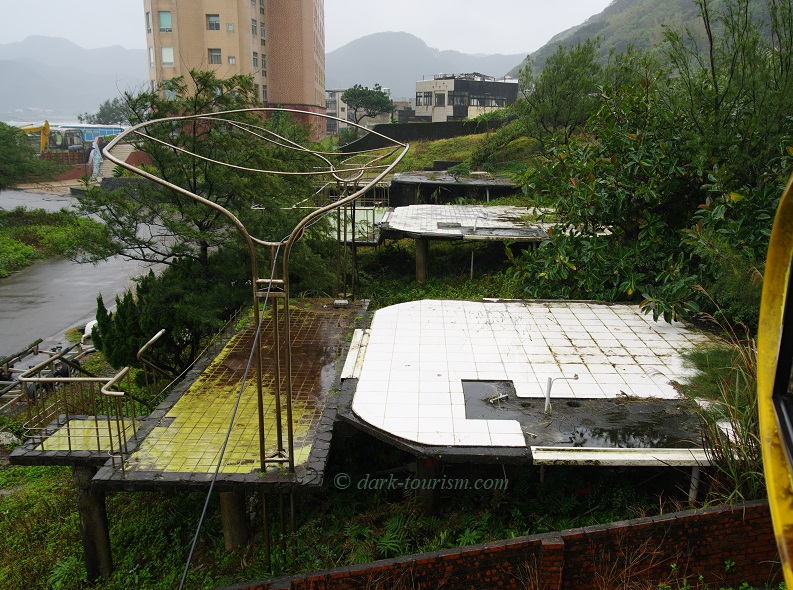
One structurally (externally) more intact Venturo was clearly used for storing surfboards:
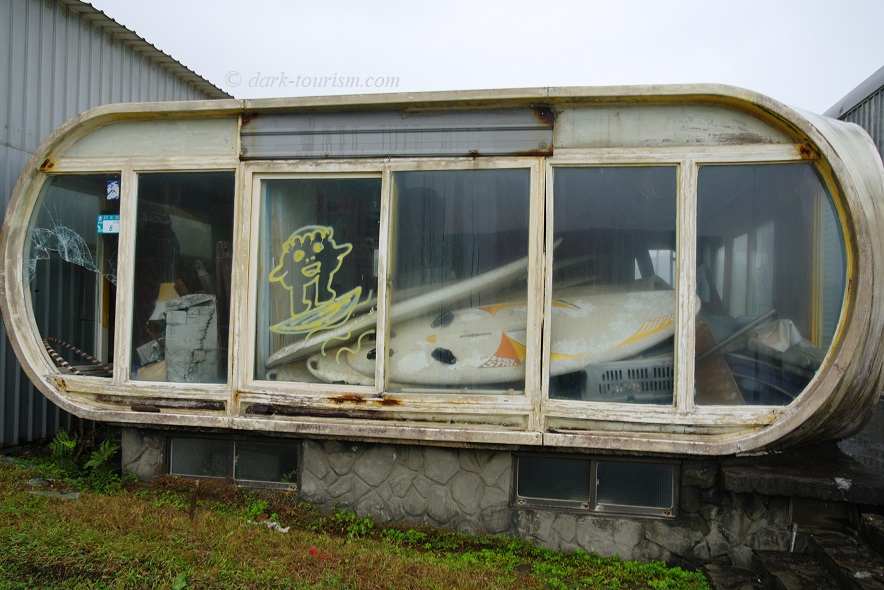
Through the missing window of yet another Venturo House I could see the semi-trashed interior, still featuring some intact pieces of furniture – and an old tube television set!
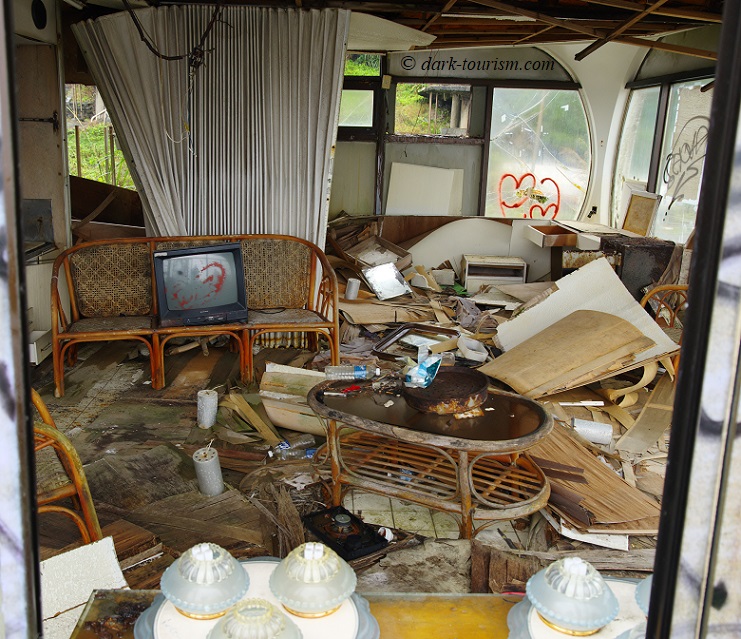
Finally, I found one single completely intact Venturo House that was evidently even still in use, going by the clean and neatly drawn curtains and the contemporary A/C units at the back.
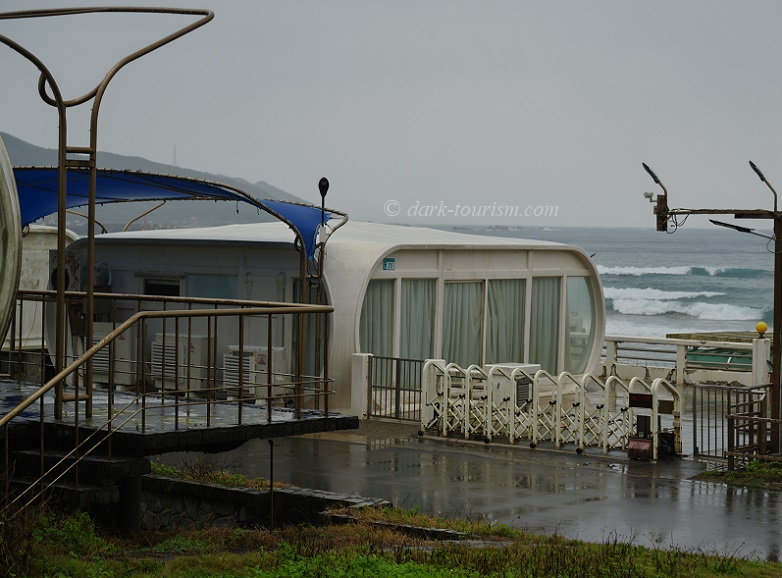
To the north of the “Futuro Village” stand two large hotel complexes, one apparently still in use, but the other one abandoned (excuse the slight blur – the photo was taken from a moving vehicle):
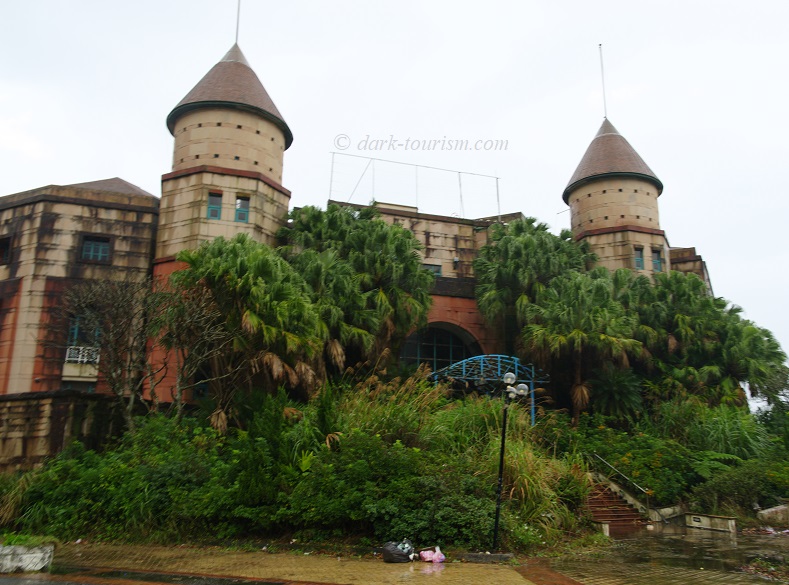
Just as we were about to drive off I spotted a gap in the boarded-up front door and asked our driver to stop and let us briefly explore the site. So we filed in and had a look around. More urbexing in Taiwan! Cool! Here’s a photo from where the reception desk was:
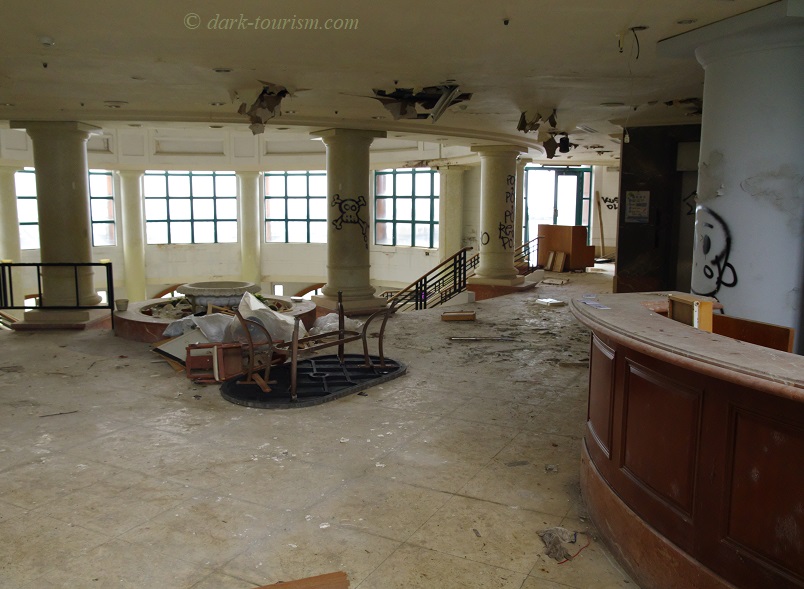
In the centre of the complex is this grand atrium on four levels with stairs leading down two flights (to where the pool and spa areas once would have been):
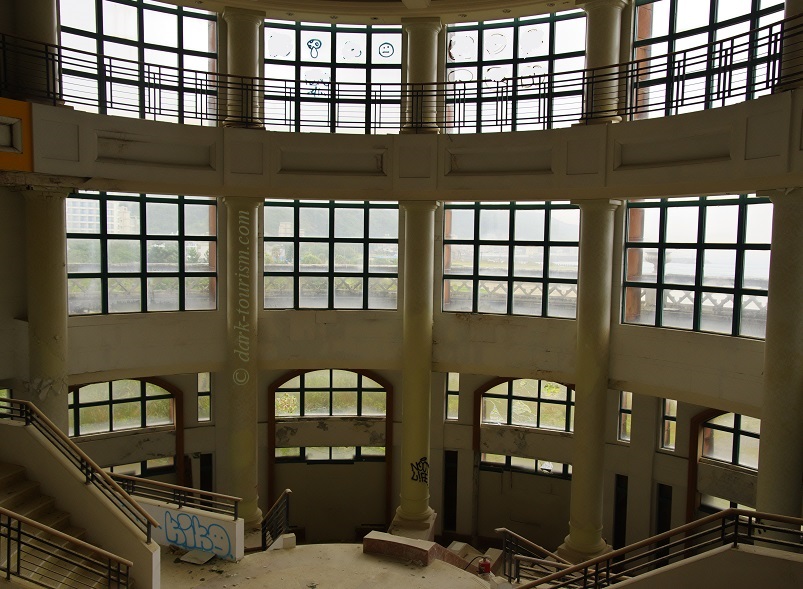
And the top of the atrium is crowned by a most magnificent, four-domed ceiling in blue and gold:
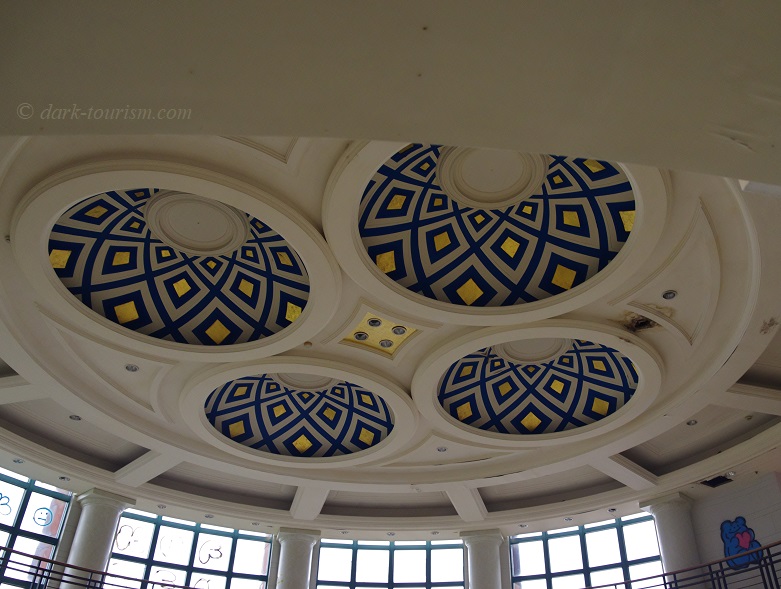
To the right of the atrium I came across a part with what looked like an empty extra reception desk, and I wondered whether this would have been the entrance to a casino, or maybe a restaurant:
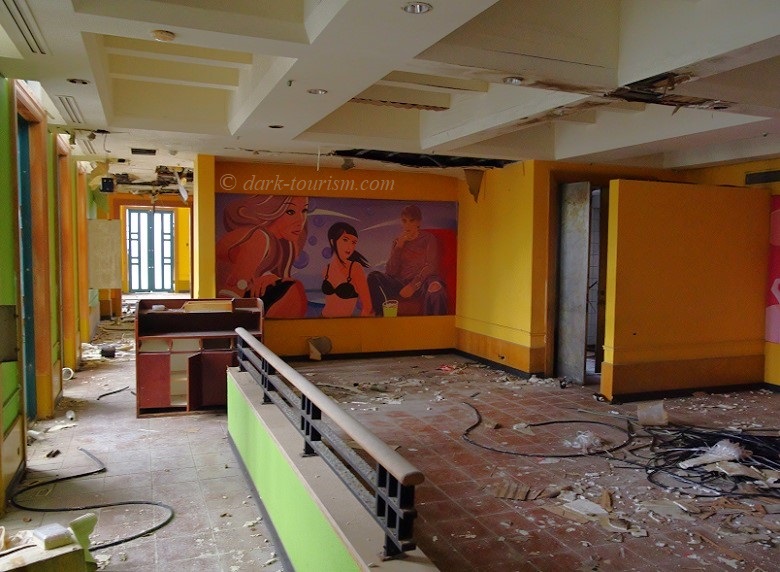
On the inner wall of this part I found a large wall mural with beach resort images (I presume – I can’t quite decode all of it):
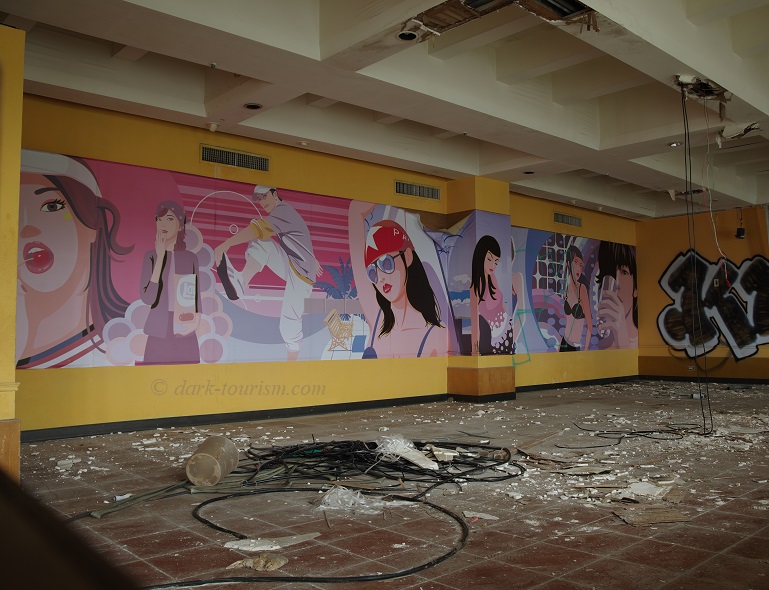
And of course, as in most abandoned buildings, there’s plenty of graffiti. Most of it is of the usual boring type of so-called “tags” (I usually pixelate those in my photos), but I also found this rather cute bear graffito on the doors of the now defunct lift:
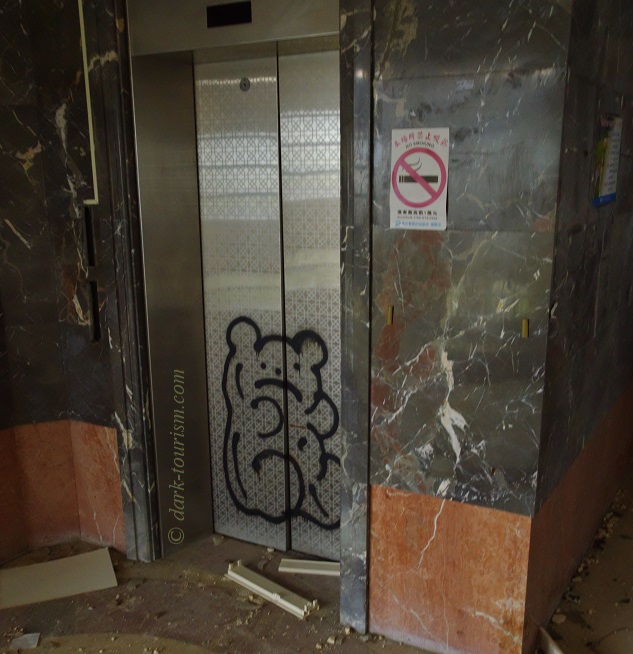
Finally, here’s a photo of a side room in the east wing of the complex – which I picked because the graffiti in here included the word “past”. And indeed it’s quite past its former glory …:
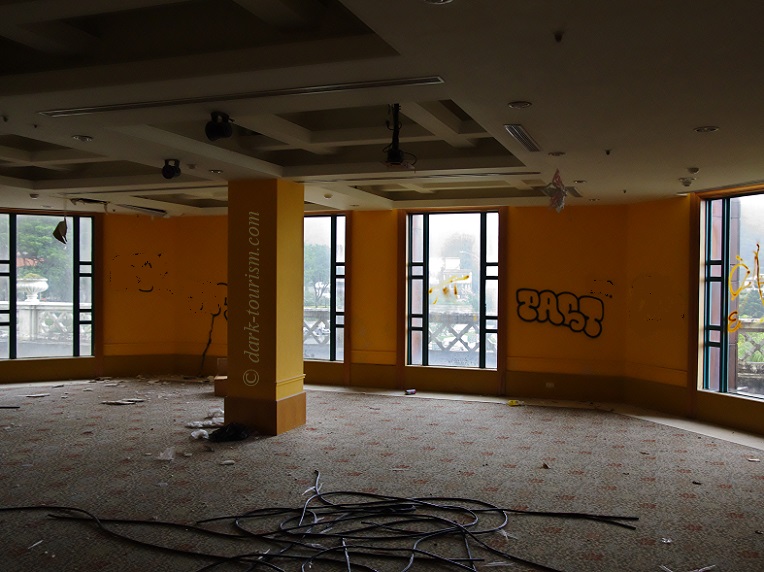
I could have spent hours exploring this complex and I’m sure there would have been plenty more to discover. But as we were a bit pressed for time we left it at this and drove off to our next destination (a former coal mine complex).
Back home I haven’t been able to unearth any real information about this abandoned hotel at Wanli (and my driver-guide clearly knew nothing about it either). But on Google Maps I found a photo of what the palatial pile looked like when it was in operation (final external link, also opens in a new tab). The pool landscape behind the hotel is gone, by the way, as you can see in map view. It’s just an empty field now.
So much for this post. Next time it’ll be something more from the core of dark tourism again. But you can’t always only do pitch-black dark. Balance is needed, I hope you agree.



